A kremlin is a major fortified central complex found in historic Russian cities. The word is often used to refer to the Moscow Kremlin and - metonymically - to the government based there. Other such fortresses are called detinets, such as the Novgorod Detinets.
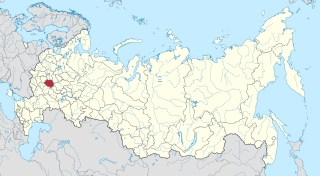
Ryazan Oblast is a federal subject of Russia. Its administrative center is the city of Ryazan, which is also the oblast's largest city.

Ryazan is the largest city and administrative center of Ryazan Oblast, Russia. The city is located on the banks of the Oka River in Central Russia, 196 km (122 mi) southeast of Moscow. As of the 2010 Census, Ryazan had a population of 524,927, making it the 33rd most populated city in Russia, and the fourth most populated in Central Russia after Moscow, Voronezh, and Yaroslavl.

Sergei Alexandrovich Yesenin, sometimes spelled as Esenin, was a Russian lyric poet. He is one of the most popular and well-known Russian poets of the 20th century. One of his narratives was "lyrical evocations of and nostalgia for the village life of his childhood – no idyll, presented in all its rawness, with an implied curse on urbanisation and industrialisation".

Dmitry Ivanovich Ilovaysky was an anti-Normanist conservative Russian historian who penned a number of standard history textbooks.
The Russo-Crimean Wars were fought between the forces of the Tsardom of Russia and the Crimean Khanate during the 16th century over the region around the Volga River.
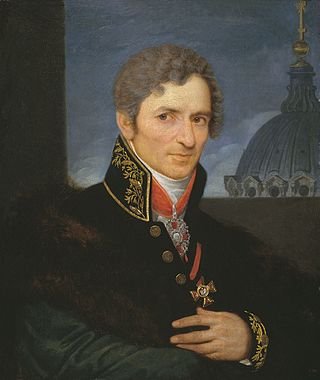
Andrey (Andrei) Nikiforovich Voronikhin was a Russian architect and painter. As a representative of classicism he was also one of the founders of the monumental Russian Empire style. Born a serf of the Stroganov family, he is best known for his work on Kazan Cathedral in Saint Petersburg.
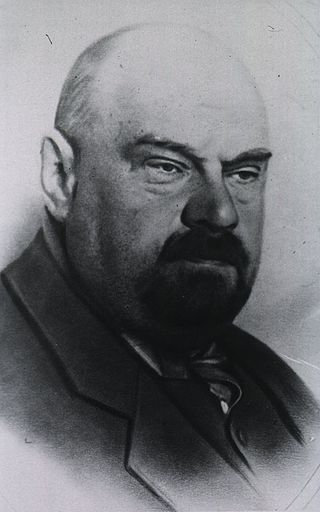
Pyotr Borisovich Gannushkin was a Russian psychiatrist who developed one of the first theories of psychopathies known today as personality disorders. He was a student of Sergei Korsakoff and Vladimir Serbsky. Not only did he manage to delineate certain organizational tasks of social psychiatry, but he also clearly formulated the main methodological aim of social psychiatrists, to combine methods of individual clinical analysis with sociological research and generalization.

Still Life with Pussy-Willows is a painting by Taisia Afonina, a Russian artist who lived and worked in Leningrad. She was a member of the Leningrad branch of Union of Artists of Russian Federation and representative of the Leningrad School of Painting. The painting shows a typical table laid for tea drinking on a spring day in a Leningrad apartment in the mid-1960s.

Midday is a 1982 painting by Evgenia Antipova, a Russian painter and graphic artist renowned for her landscape and still life paintings. Antipova was a member of the Saint Petersburg Union of Artists. She lived and worked in Saint Petersburg and is regarded as a member of the Leningrad School of Painting.

The Regional Art Exhibition "Our Contemporary" became one of the most important and largest Soviet Art exhibition of the 1970s. The Exhibition took place in the State Russian Museum and in the exhibition halls of the Leningrad Union of Soviet Artists.

Vasily Pavlovich Kravkov was an Imperial Russian Army medical officer, Privy Councilor (1917), and author of diaries of the Russo-Japanese War and World War I.
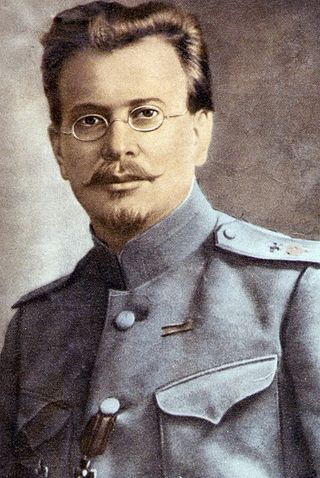
Nikolai Pavlovich Kravkov was a prominent Russian pharmacologist, Full Member of the Imperial Military Medical Academy (1914), Corresponding Member of the Russian Academy of Science (1920), and one of the first laureates of the Lenin Prize (1926). He is considered the founder of the Russian scientific school of pharmacology.

Aleksandra Nikolayevna Susokolova, better known as Aleksandra Jacobi, was Russian journalist, memoirist and publicist, translator and publisher who also used the pseudonym Toliverova and signed her work as Peshkova-Toliverova. Her portraits have been painted by her common-law husband Valery Jacobi, as well as Vasily Vereshchagin.

Evgeny Petrovich Goslavsky was a Russian writer, playwright and poet.
The Kobuzev family is an ancient Russian noble family descended from Ryazanian boyar scions.
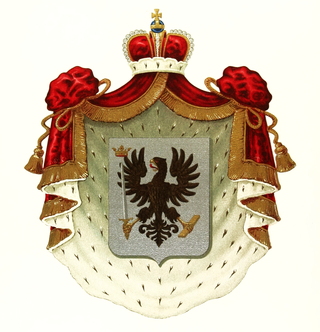
The Lyapunov family is a Russian noble family claiming descent from the Galich Rurikids, who lost their princely title in the 15th century. The family later served the archbishop of Veliky Novgorod, and subsequently integrated into the Ryazanian nobility.

The House of Rzhevsky is a Russian noble family descended from the Rostislavichi of Smolensk.

The Pozhalostin Ryazan Regional and State Art Museum is one of the oldest art museums in Russia. It houses about 12,000 items of Russian and Western Art, mainly paintings, graphics, sculptures, traditional arts and crafts, dating from the late 15th to the late 20th centuries. Its Western collection includes some works of the painters of the Flemish, French, and Italian schools, as well as porcelain items from English, German, and French manufacturers. A number of paintings, drawings, and sculptures, including several ancient icons, represent the museum's Russian Art collection. The works of Ryazan artists occupy an important part of the exposition.
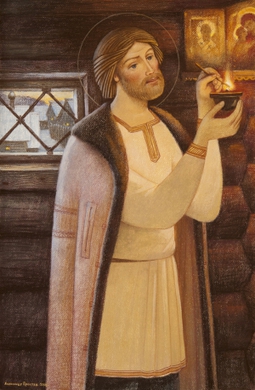
Davyd Yuryevich and Euphrosyne, known as Saints Peter and Fevronia of Murom, were the Russian prince and princess consort of the Principality of Murom. They are some of the most renowned Russian saints and wonderworkers venerated both in the Eastern Orthodox Church and the Eastern Catholic Church; their feast day is celebrated every year on 25 June, N.S..

















